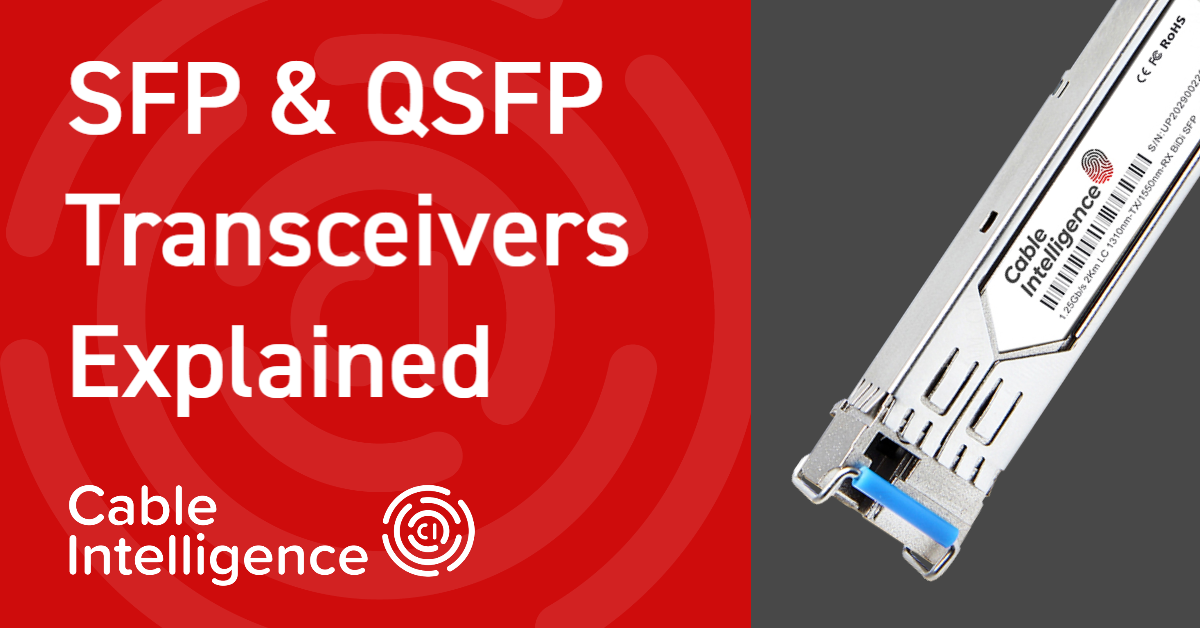In this article, we’ll explore the different types of SFP’s that are available, what they’re for and some of their features. However, before we dive into specifics, it’s worth defining exactly what SFP’s are for those reading this article who are new to these products.
What Are SFPs?
SFPs, or ‘Small Form-Factor Pluggable’ to use their unabbreviated name, are small transceivers that are designed to connect network devices such as switches to fibre or copper network cables (the DAC and AOC cables that connect to these transceivers are something we will explore in a later blog post).
Which transceiver you go for depends entirely on a range of various factors, such as line speed, operating distance, transmitter wavelength and more. Here are the most common:
SFP
The ‘base’ type of transceiver is simply termed ‘SFP’. These transceivers are capable of transferring data at speeds of up to either 100Mbit/s or 1Gbit/s depending on the model.
SFP+
SFP+ transceivers are an enhanced version of the original SFP modules. Most commonly, they are sold as 10Gbit/s, however, it is possible to get hold of 16Gbit/s SFP+ transceivers. They are exactly the same in terms of dimensions as SFPs, making them easy for use in existing equipment.
SFP28
SFP28 transceivers support a speed of up to 25Gbit/s, again identical to SFP and SFP+ in dimensions. They have evolved from the 100G ethernet interface.
QSFP & QSFP+
QSFP stands for ‘Quad Small Form-Factor Pluggable’. Arguably, the main difference between these and SFPs are the increased data rates offered (4G/40G/50G/100G/200G).
SDI
SDI, or Serial Digital Interface, are SFP transceivers designed for use in the television industry, commonly available in 3G, 6G or 12G variants.
Singlemode Vs Multimode
While we will explore the pros and cons of single-mode (SMF) and multimode (MMF) fibre in a separate article, it’s important to know the basics of these concepts when choosing a transceiver module.
In simple terms, SMF transceivers are ‘long reach’, meaning that they can be used for example to connect buildings to each other or over large distances within a single building.
Conversely, MMF transceivers can be categorised as ‘short reach’. Generally, they are used to connect switches within a rack or building.
As a general rule of thumb, the operating distance of SMF transceivers can be measured in kilometres, whereas MMF transceivers are able to operate over a certain amount of metres.
RJ45 vs LC vs MTP/MPO
Depending on the data rate and type of connecting cable used, SFP transceivers feature different connectors. Generally speaking, SFP, SFP+ and SFP28 modules will use either LC or RJ45 connectors, depending on whether the cable is copper or fibre, whereas QSFP & QSFP+ are available in LC or MTP/MTO.
Digital Optical Monitoring
Digital Optical Monitoring or DOM allows you to monitor various variables such as power, temperature and supply voltage. This means that if a transceiver is failing, it is easy to identify. DOM is available on most transceivers.

